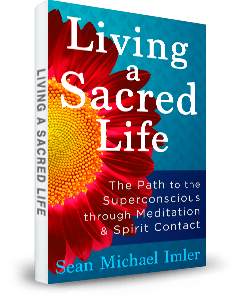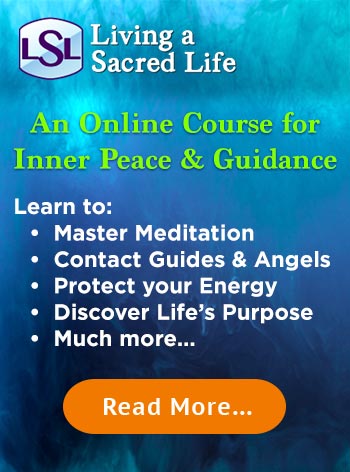In today’s world, our approach to health is evolving. While we can’t deny the immense benefits of allopathic medicine and modern psychology, it’s becoming apparent that healing is not a one-size-fits-all process. For many of us, the journey to wellness requires a more holistic approach.
Contents
Energy healing is an ancient practice that’s gaining renewed interest in our modern age. With roots in Eastern philosophies and medicine, it presents a different perspective on health and wellbeing, emphasising the role of the body’s energy fields in maintaining physical and emotional health.
- The practice of energy healing involves manipulating these energy fields to restore balance, eradicate blockages, and stimulate the body’s inherent healing capabilities.
- It offers the potential to treat a variety of conditions, many of which may not respond to conventional treatments or may require a more holistic approach.
Understanding the principles of energy healing and integrating these into our health care practices could provide us with an additional tool, not just for treating ailments, but for promoting overall wellbeing in a comprehensive sense.
Exploring energy healing isn’t about rejecting allopathic medicine or modern psychology. Instead, it’s about broadening our perspectives, acknowledging that the human body (and subsequently, human health) is more complex than we’ve traditionally understood. It’s about understanding ourselves as complete entities – physical, emotional, and energetic – and using this understanding to inform and enrich our healthcare practices.
So, how do you know if energy healing is right for you? And if it is, how do you go about finding the right modality? In this article, we will delve deeper into the world of energy healing, discussing its various modalities, and providing guidance on how to navigate this complex but potentially rewarding journey.
Understanding Energy Healing: A Comprehensive Guide to Holistic Wellness
In my years of study and practice, I’ve come to understand that energy healing is a holistic approach to wellness that addresses the body, mind, and spirit. As the name implies, this form of healing revolves around the concept of energy—an intangible force that exists within and around us, influencing our health and wellbeing. It’s essential to comprehend this notion because it forms the cornerstone of many healing modalities, ranging from Reiki and Qigong to Crystal Healing and Pranic Healing.
Energy healing, in its various forms, is founded on the belief that disturbances in the body’s energy fields can lead to physical, emotional, and psychological illnesses. Therefore, by optimizing these energy fields (also known as ‘qi’, ‘prana’, or ‘biofield’), we can facilitate the body’s inherent ability to heal itself.
The Many Modalities of Energy Healing
Energy healing comes in various forms, each with its distinct methodologies, tools, and techniques. Here are some of the most common modalities:
- Reiki: This Japanese technique for stress reduction and relaxation also promotes healing. It’s based on the notion that a ‘life force energy’ flows through us, and low levels of this energy can lead to illness or stress.
- Qigong: An ancient Chinese practice that integrates physical postures, breathing techniques, and focused intention to cultivate and balance qi (or life energy).
- Crystal Healing: This modality harnesses the vibrations of crystals to help clear, align and balance the body’s energy systems.
- Pranic Healing: Based on the principle of body’s self-recovery, it uses prana (life energy) to initiate specific biochemical changes that lead to physical healing.
Each of these modalities, while distinct, operates on the same foundational premise—that our health and wellbeing are intrinsically linked to the state of our energy fields.
Finding the Right Modality for You
Choosing the right energy healing modality depends on various factors such as your comfort level with the practices involved, your personal preferences, and your specific health and wellness goals. It’s advisable to explore different modalities, learn about their methodologies, and perhaps even experience a few sessions before deciding which one resonates with you the most.
How Do You Know If It Works?
Evaluating the efficacy of energy healing can be a complex endeavor. Unlike conventional medicine, which relies on quantifiable results from laboratory tests and clinical trials, energy healing is more subjective and personal. It often involves fine-tuning your awareness and listening to your body’s signals. You might notice a reduction in symptoms, an enhanced sense of wellbeing, increased energy levels, or emotional stability. These are all signs that the healing is working.
Understanding energy healing is crucial to comprehending the entire spectrum of wellness possibilities. By exploring different modalities and tuning into your body’s signals, you can find a healing path that is uniquely tailored for your needs.
Discovering the Different Modalities of Energy Healing: Reiki, Chakra Healing, and More
As we delve deeper into the realm of energy healing, it’s worthwhile to note that there are many modalities under its umbrella. Each modality carries its unique approach to harnessing, channeling, and manipulating energy, yet all share the common goal of promoting healing and wellness. The choice of a modality often comes down to personal preference and the specific needs of an individual. So let’s explore some of the most popular forms of energy healing: Reiki, Chakra Healing, Quantum Touch, Theta Healing, Pranic Healing, and BodyTalk.
As we delve deeper into the realm of energy healing, it’s worthwhile to note that there are many modalities under its umbrella. Each modality carries its unique approach to harnessing, channeling, and manipulating energy, yet all share the common goal of promoting healing and wellness. The choice of a modality often comes down to personal preference and the specific needs of an individual. So let’s explore some of the most popular forms of energy healing:
Reiki
Reiki, a word derived from two Japanese words—Rei (Universal Life) and Ki (Energy)—is a form of energy healing. It operates on the premise that a skilled practitioner can channel life energy into a patient, replenishing their vital energy reserves and fostering healing (physical and emotional). The practice, although simple in execution, requires attunement from a Reiki Master and is often associated with stress reduction and relaxation.
Chakra Healing
Chakra Healing, as the name implies, focuses on the seven chakras (or energy centers) in the human body. These chakras, according to ancient Indian teachings, regulate all parts of our body and thus our wellbeing. In essence, Chakra Healing aims to balance these energy hubs, enabling the free flow of life force energy (Prana). This modality often incorporates other tools such as crystals, color therapy, and sound healing to aid in balancing the chakras.
Quantum Touch
Quantum Touch, a newer entry into the realm of energy healing, utilizes techniques such as visualization and breathwork to raise the healer’s vibrational level. This heightened energy state is then directed towards the patient, triggering the body’s self-healing response. In my experience, Quantum Touch is a hands-on method that emphasizes the power of focused intent in the healing process.
Theta Healing
Theta Healing, on the other hand, is a meditative practice that encourages the practitioner to reach a theta brainwave state. This state, often linked to deep relaxation and increased intuition, allows the healer to access the subconscious mind and effect healing changes. This modality, I find, often prompts profound personal transformations and spiritual realizations in those who practice it.
Pranic Healing
Pranic Healing is another modality that draws heavily from Eastern philosophies. It revolves around the concept of “Prana” (life force energy) and its role in maintaining health and wellness. A Pranic healer, much like a Reiki practitioner, channels this life energy to the patient, but with a greater focus on cleansing the energy body before energizing it.
BodyTalk
BodyTalk incorporates aspects of dynamic systems theory, quantum mechanics, and Eastern and Western philosophy, as well as western allopathic and Chinese medicine, providing a holistic approach to healing. Through a series of questioning and muscle testing (known as neuromuscular biofeedback), BodyTalk practitioners can tap into the body’s innate ability to heal itself, exploring areas where communication and synchronization within the body are disrupted or imbalanced.
The Science Behind Energy Healing: How It Works and How It Can Benefit You
Before delving into the intricacies of energy healing, it’s imperative to understand the foundational concept that underpins it – the existence of an energy field (often referred to as a biofield) around the human body. This energy field, according to numerous ancient medical systems like Ayurveda and Traditional Chinese Medicine, is vital for maintaining physical, mental, and emotional health. When this energy flow becomes disrupted or blocked, it can lead to issues ranging from physical illness to psychological distress.
The Underlying Principles of Energy Healing
Energy healing, in its various forms, aims to restore this balance and promote overall wellbeing. It operates on the principle that an energy healer can tap into this energy field and manipulate it, removing blockages and restoring a smooth flow of energy. Although this may sound metaphysical, there is a growing body of scientific research that supports the therapeutic effects of energy healing. Studies have shown that techniques like Reiki can lead to significant decreases in pain, anxiety, and fatigue (Thrane & Cohen, 2014).
How Energy Healing Can Benefit You
The potential benefits of energy healing are expansive and encompass both the physical and emotional realms. By restoring energy flow, energy healing may aid in relieving chronic pain, accelerating healing, reducing stress, improving sleep, and enhancing your sense of wellbeing. Moreover, given its non-invasive nature, energy healing can be a complementary modality to conventional treatments, offering a holistic approach to health and wellness.
Finding the Right Modality for You
The world of energy healing is diverse, with numerous modalities available, each with its unique methods and philosophies. Some of the most popular ones include Reiki, Pranic Healing, Qi Gong, and Therapeutic Touch. When choosing a modality, consider your personal preferences (Do you prefer touch or non-touch methods?), comfort level (How do you feel about the practitioner’s approach?), and, importantly, the practitioner’s qualifications and experience.
How to Gauge if Energy Healing is Working
Assessing the effectiveness of energy healing can be somewhat subjective, given that it often involves subtle shifts in one’s energy and wellbeing. However, many people report feeling more relaxed, peaceful, and energetic following energy healing sessions. Others may notice a reduction in physical symptoms, such as pain or fatigue. It’s important to remember, though, that energy healing is not a quick fix but rather a process that may require regular sessions and a degree of patience.
As with any health-related decision, it’s important to consult with healthcare professionals to notify them of your objective before starting energy healing. They may be able to provide guidance based on your specific health condition and needs, but don’t expect them to have understanding of energy healing techniques. As with nutritional medicine, energy healing is not taught in standard medical programs. When choosing an energy healer, you may look for those that are certified, but definitely well-trained in their respective modality.
Exploring the Connection Between Energy Healing and Spiritual Growth
As someone who has delved deeply into the world of energy healing, I find it impossible not to acknowledge the profound connection between this practice and spiritual growth. This connection, though often overlooked by mainstream narratives, is crucial to understanding the full breadth and depth of energy healing modalities.
Energy healing, in its essence, is the manipulation and channeling of universal life force energy (often referred to as “Chi” in Chinese medicine, “Ki” in Japanese healing arts, or “Prana” in Hindu spiritual practices) to promote physical, emotional, and spiritual wellness. When we talk about energy healing, we are not merely discussing a physical phenomenon. Instead, we are talking about a holistic practice that encompasses the mental, emotional, and spiritual facets of our existence.
But why exactly does energy healing play a significant role in spiritual growth? Let’s explore this topic further.
Energy Healing as a Path to Self-Discovery
The journey of energy healing can often lead to profound self-discovery. As you delve into energy healing practices (be it BodyTalk, Pranic Healing, or Qi Gong), you begin to understand more about your inner world (your thoughts, feelings, and emotions) and how it can impact your external reality (your physical health, relationships, and life circumstances). This increased self-awareness is a cornerstone of spiritual growth, as it enables you to understand your authentic self more deeply.
Energy Healing and Spiritual Practices
Many energy healing modalities incorporate spiritual practices (such as meditation, visualization, or chanting), which can facilitate a deeper connection to the divine or the universal life force energy. These practices can enhance your spiritual awareness, making you more attuned to your spiritual nature and less bound by materialistic or ego-driven concerns.
Moving Toward Higher Consciousness
As you engage in energy healing and start to clear energy blockages, you may experience a shift in consciousness. You might find yourself becoming more attuned to your intuition, experiencing increased synchronicity in your life, or developing a greater sense of inner peace and contentment. These are all signs of spiritual growth and progression towards higher consciousness.
Many energy healing systems include a philosophical background. Whatever you’re seeking to heal probably arose due to environmental factors, be it natural environment, or the people you’ve surrounded yourself with. In order for energy healing to work, it often requires acknowledgement of your environment and the where-with-all to make changes to it.
Many maladies and dis-eases have their origin in mental-emotional issues, any stemming back to youth. Incorporation of a new philosophy of living is often necessary for the body-mind to heal itself. When you seek out a practitioner, look for one that has an understanding of the deeper processes of how consciousness affects our wounds and disorders. They will most often recommend mindfulness, meditation, journaling, or some other practice to help you reshape your relationship with your health to accompany the work they do on the energetic level.
Embarking on the journey of choosing the right energy healing modality is an intrinsically personal endeavor, one that is your built upon unique needs, proclivities, and spiritual leanings. There may be a certain practice, with its philosophy or techniques, that you find yourself magnetized towards. Alternatively, you may discover a modality that strikes a harmonic chord within your intuitive self. Regardless of the particulars, the guiding principle remains the same—heed your intuition and tune in to your inner counsel. Should a modality harmonize with your core beliefs and values, and engender a sense of rightness within you, it is likely that you’ve found a suitable match.
Learning to Trust the Process: How to Know If Energy Healing Is Working for You
If you’re anything like me, you’ve likely found yourself questioning whether energy healing is really producing results in your life. It’s a common concern for many newcomers to this field of study, and it’s something I grappled with in my early days as well. The answer, however, isn’t as black and white as we might want it to be – energy healing isn’t a science in the traditional sense, but rather an art, and as with any art, the results can be quite subjective.
First and foremost, it’s crucial to understand that energy healing works on a holistic level (that is, it addresses the entirety of your being, mental, emotional, physical, and spiritual). Therefore, the effects might not be as immediate or tangible as those of, say, a painkiller for a headache. Instead, the healing often takes place subtly and gradually, sometimes in ways you might not immediately recognize or appreciate.
One key indicator that energy healing might be working is a sense of lightness. If you find yourself feeling generally generally less heavy, more boyant, more in tune with yourself and the world around you, these could be signs that the energy healing practices you’re engaging in are effectively balancing your energy field.
You might also notice changes in your physical health. Keep in mind that these changes will likely not be dramatic or immediate (as would be the case with conventional medicine), but rather gradual and subtle. You may find that you’re getting sick less often, or that chronic conditions are improving. You may feel more energetic, sleep better, or notice improvements in your skin or digestion. These are all signs that your body’s energy field is becoming more balanced and, consequently, that your physical health is improving.
Of course, it’s important to remind ourselves that everyone’s experience with energy healing is unique. What works for one person might not work for another, and the signs that the healing is taking place can vary greatly from individual to individual. It’s also important to remember that energy healing does not replace conventional medicine or therapy but should be used in conjunction with them.
Remember that the key to successful energy healing is patience and openness. The process may take time, and the results may not always be what you expect. But if you approach it with an open mind and an open heart, you may find that energy healing can bring about profound changes in your life.
Ultimately, the best way to determine if energy healing is working for you is to trust your intuition. Your intuition, after all, is your most powerful tool in navigating the world of energy healing. If something feels right, it probably is. If something feels off, it probably is. Trust in yourself, trust in the process, and most importantly, trust in the energy.
The Power of Your Own Energy: How to Harness It for Maximum Healing Potential
At the heart of energy healing, and indeed, at the core of our very existence, lies an often underappreciated factor: our own energy. It is my firm belief (bolstered by years of study and practice) that understanding and harnessing our own energy can lead to profound healing potential. This isn’t just an abstract concept; it’s a powerful tool that, when leveraged properly, can facilitate physical, mental, and emotional healing.
Our energy, or life force, is more than just a vague metaphysical idea. It’s a palpable presence that moves within and around us, influencing our health, mood, and overall well-being. Recognizing this is the first step towards effective energy healing. But how does one go about harnessing this energy?
Understanding Your Energy
To harness your energy, you must first understand it. You should know that your energy is not just a solitary entity; it’s a complex system composed of various elements (chakras, meridians, and auras, to name a few). Each of these elements plays a vital role in maintaining your health and overall well-being. Disruptions in these energy systems can lead to physical or mental health issues.
Therefore, spending time just being with your body, your thinking processes, and your emotions is important. You need to pay attention to how you feel, where are you holding stress, heaviness, stagnation lethargy. Notice where you’re feeling flow, movement, rushing, or other sensations. Notice this in different locations like work, home, nature to acknowledge the differences. Keep a journal to track noticeable changes so you can piece together your energetic blueprint.
If you would like more information on the relationship between Energy and Empathy, read, “How to Escape From Being Affected By Energy and Empathy.”
Practicing Regularly
Like any other form of healing, energy healing requires consistent practice. Regular sessions (either self-practice or with a professional healer) are essential to maintain balanced energy flow and promote overall health. Regular practice not only helps in healing existing issues but also in preventing potential health problems.
Understanding and harnessing your own energy might seem like a daunting task, but with patience, practice, and the right guidance, it’s entirely achievable. Remember, the journey to energy healing is a personal one. It’s about self-discovery, self-awareness, and self-healing. And it’s a journey well worth undertaking.
Overcoming Skepticism: Addressing Common Misconceptions About Energy Healing
Overcoming skepticism about energy healing requires us to address some of the common misconceptions that often cloud its true understanding and potential benefits. It’s crucial we tackle these misunderstandings head-on, as they can hinder individuals from exploring and benefiting from these holistic healing practices. Let’s dive into some of the most common misconceptions about energy healing, and why they hold little water when scrutinized closely.
Misconception 1: Energy Healing is Not Scientific
One of the most prevalent misconceptions about energy healing is that it is not based on scientific principles. In reality, several forms of energy healing, such as Reiki, Quantum Healing, BodyTalk and Biofield Energy Healing, have been studied scientifically (often under the umbrella of complementary and alternative medicine) and have shown promising results. Additionally, the concept of energy fields interacting with the human body is a cornerstone in many established scientific fields, such as quantum physics and biochemistry. It’s worth noting, however, that more rigorous and systematic studies are needed to fully understand and validate these practices.
Misconception 2: Energy Healing is a Placebo Effect
Another common misconception is that energy healing works solely due to the placebo effect. While the placebo effect can indeed play a role in any therapeutic context (including conventional medicine), to attribute the benefits of energy healing solely to this effect is an oversimplification. Many practitioners and recipients of energy healing report tangible effects that go beyond placebo, and some studies have shown positive results under controlled conditions where placebo effects have been ruled out.
Misconception 3: All Energy Healing Modalities are the Same
It’s a common misunderstanding to lump all energy healing practices into one homogenous group. In reality, there are numerous energy healing modalities, each with its own unique methods, philosophies, and techniques. For instance, Reiki involves the laying of hands to transfer energy, while Quantum Healing focuses on the power of the mind to influence physical reality. Just as we recognize the distinctiveness of different types of conventional medical treatments, it’s essential to acknowledge the diversity within energy healing practices.
Overcoming skepticism towards energy healing involves clearing these and other misconceptions, fostering a more open and informed dialogue about these practices. It’s essential to approach energy healing (and indeed, any form of healing) with an open mind but also a discerning eye, seeking evidence, understanding the methodologies, and respecting individual experiences.
If you’re interested in exploring Energy Healing with me, please contact me for a Consultation.











